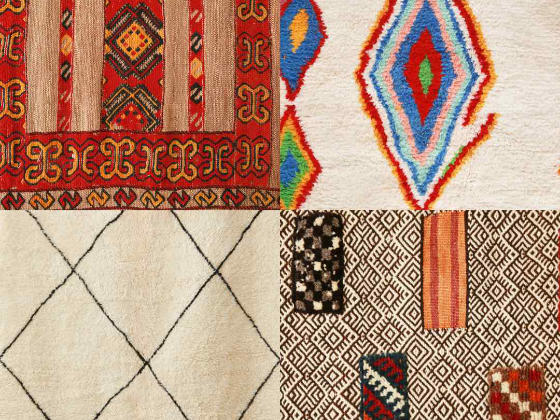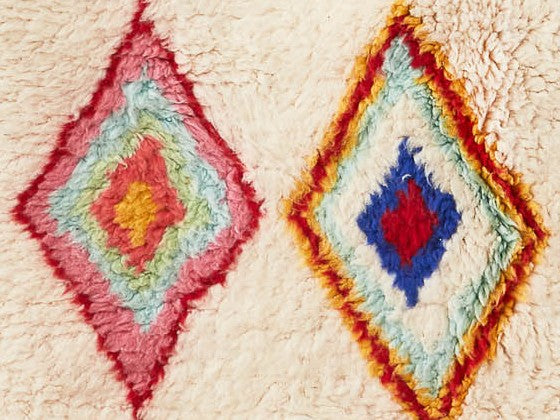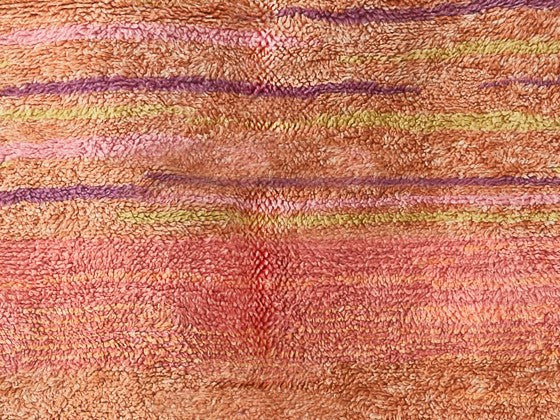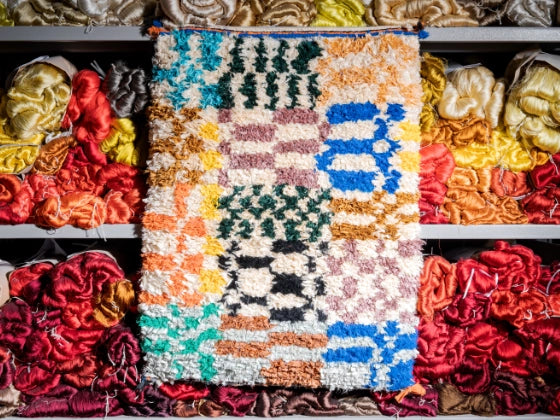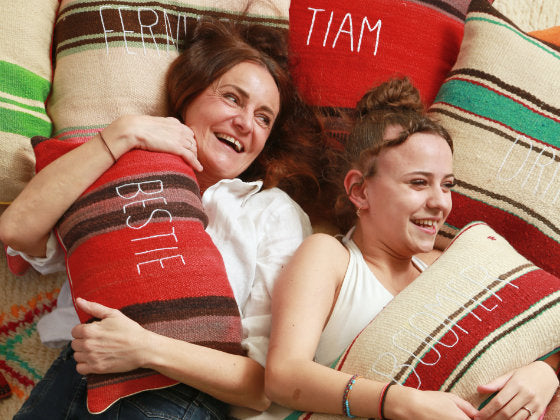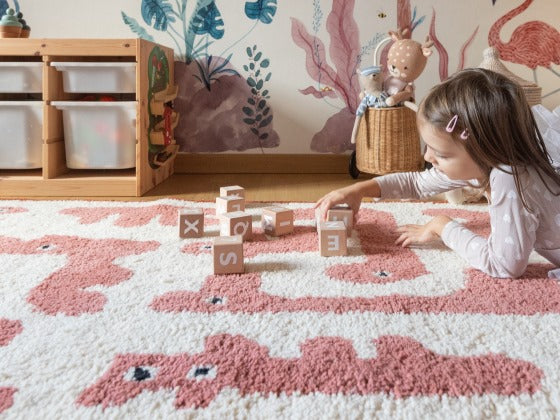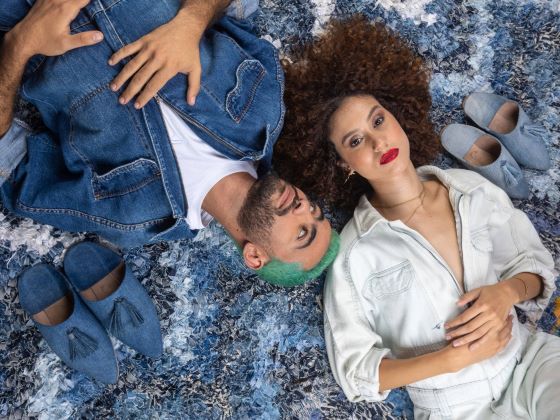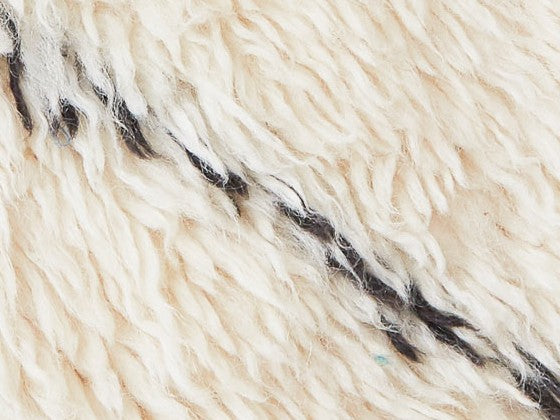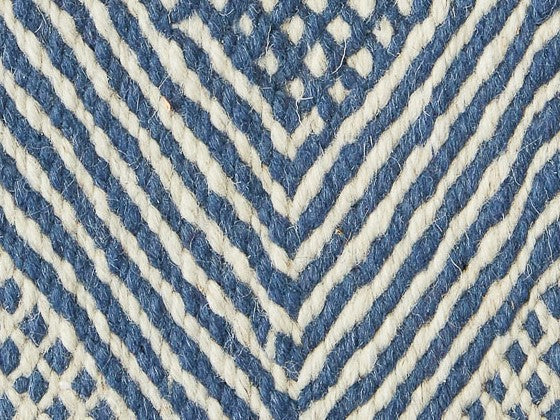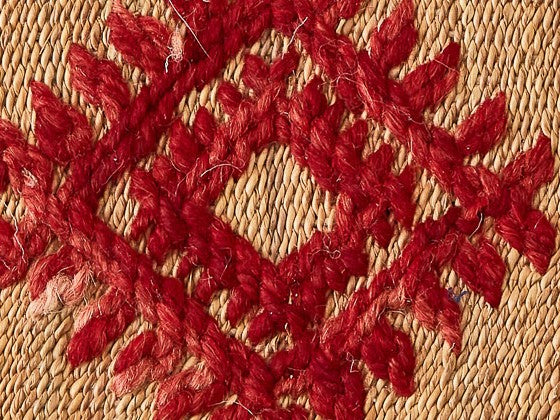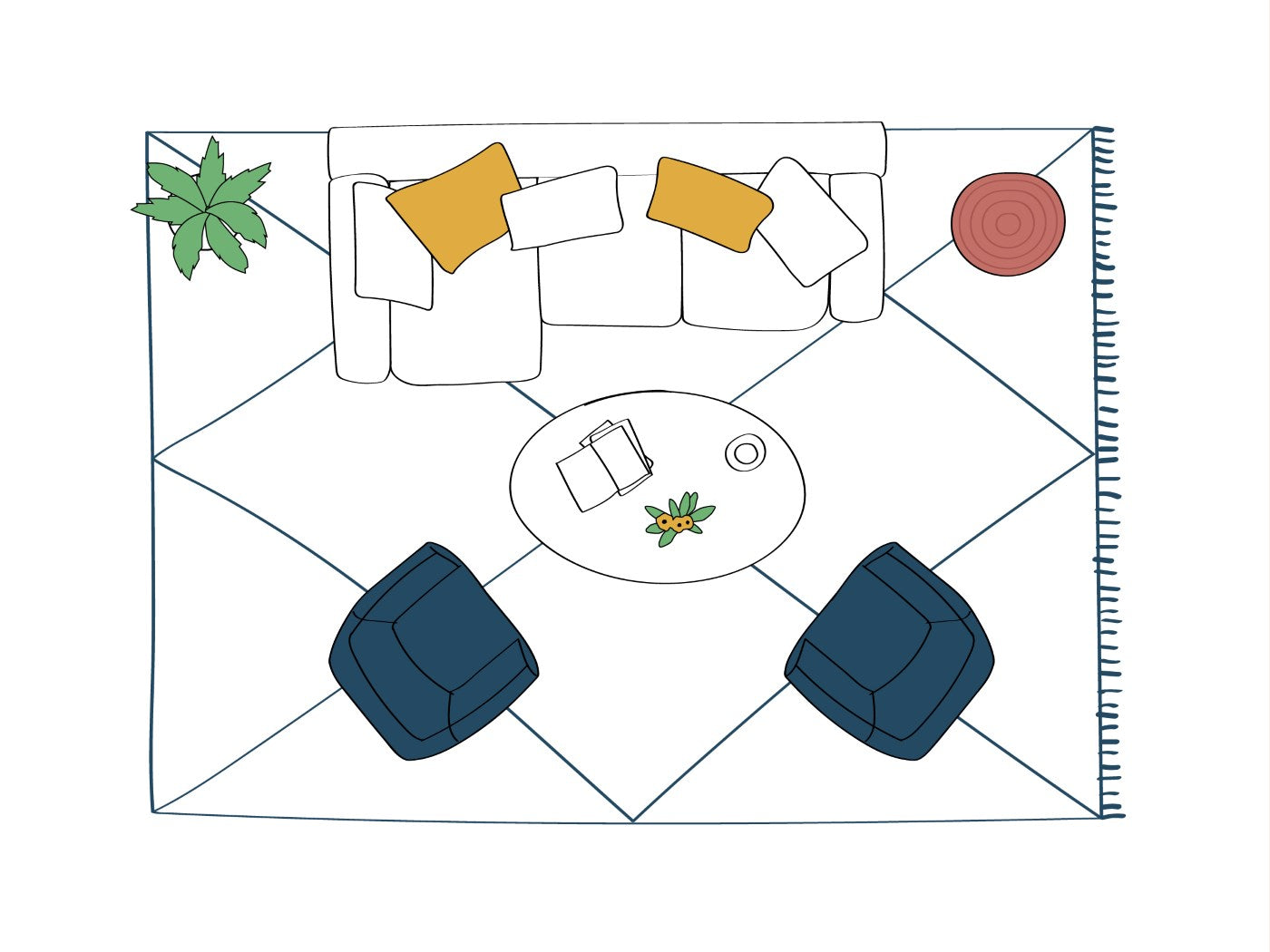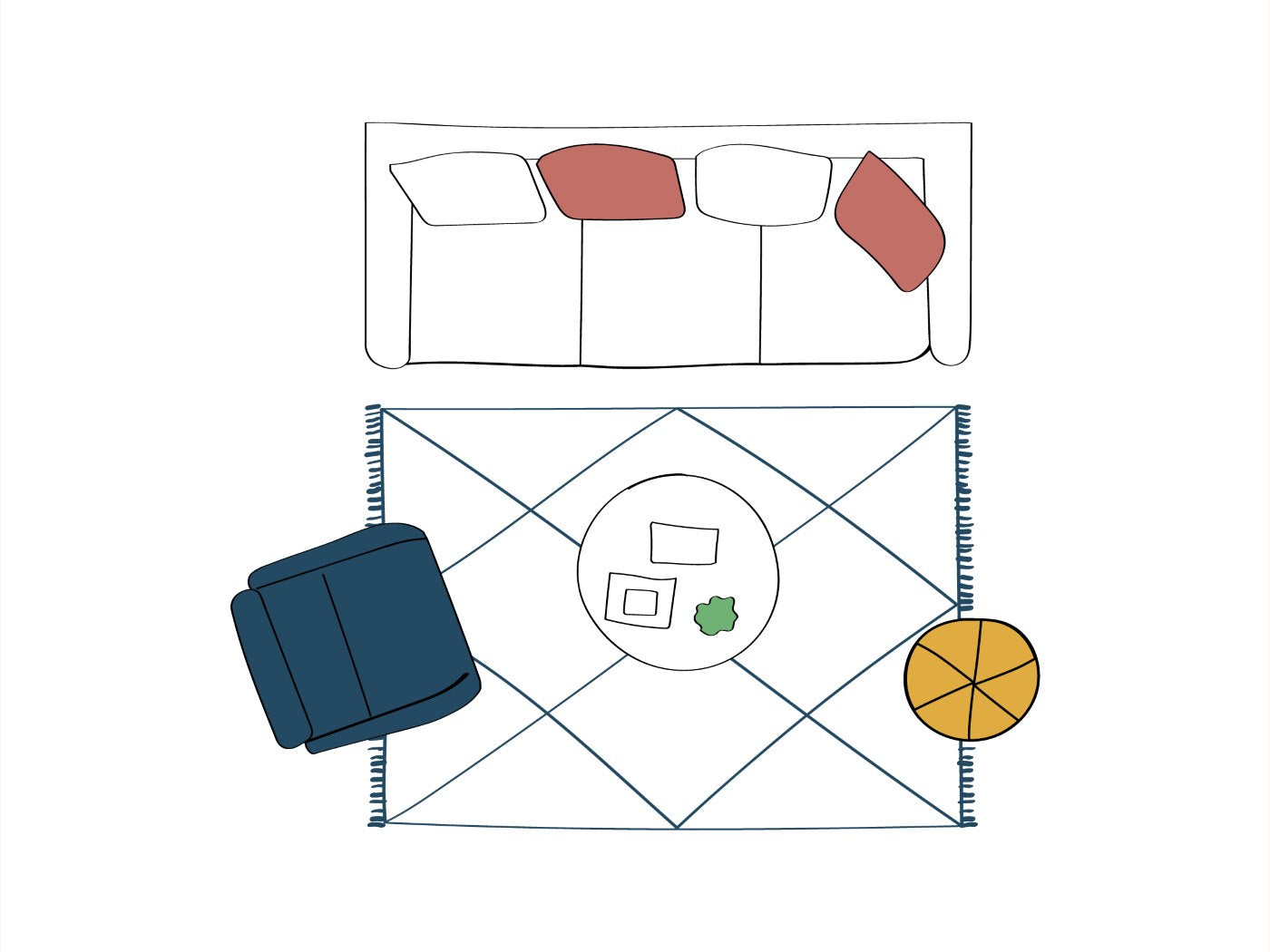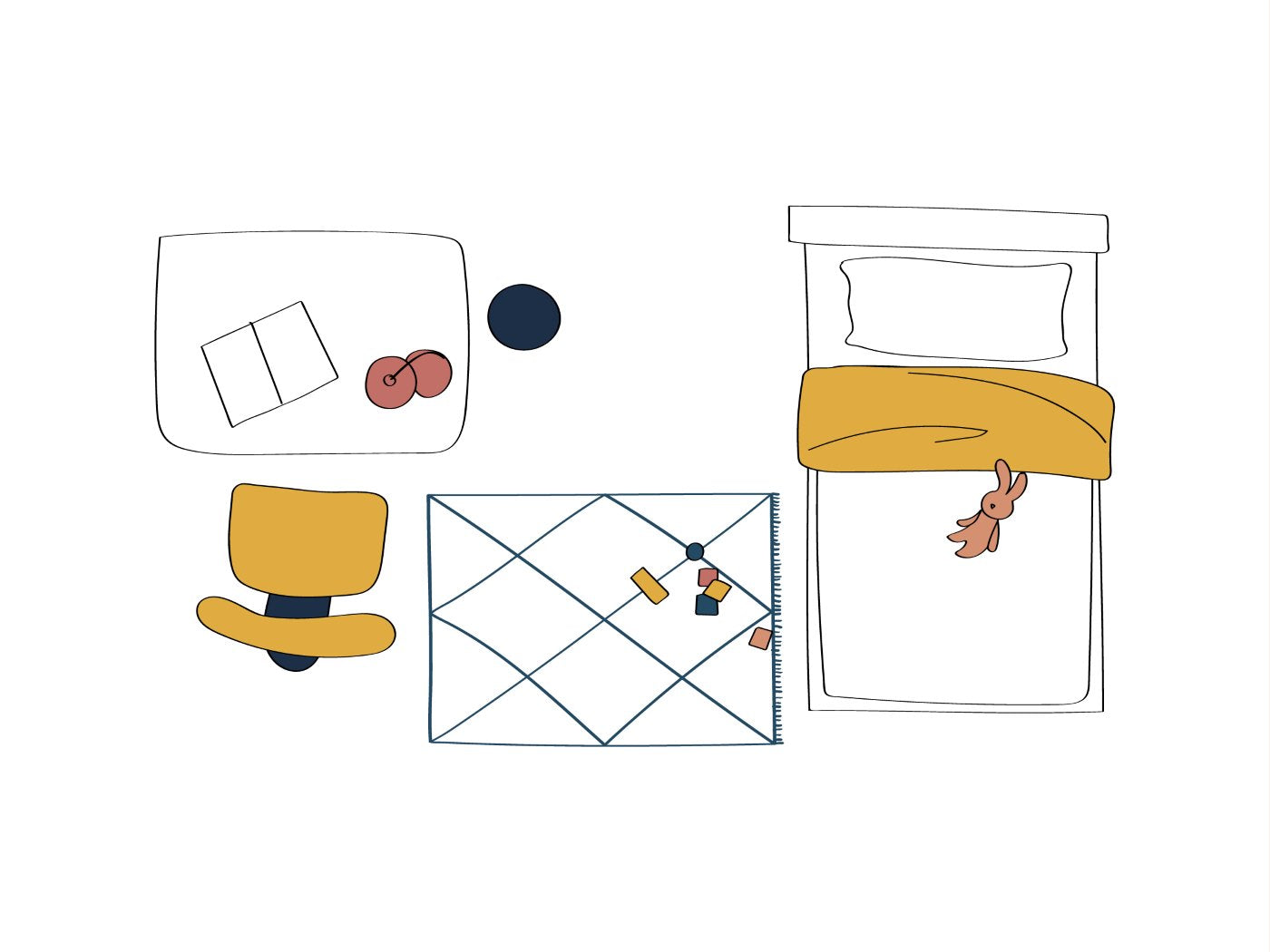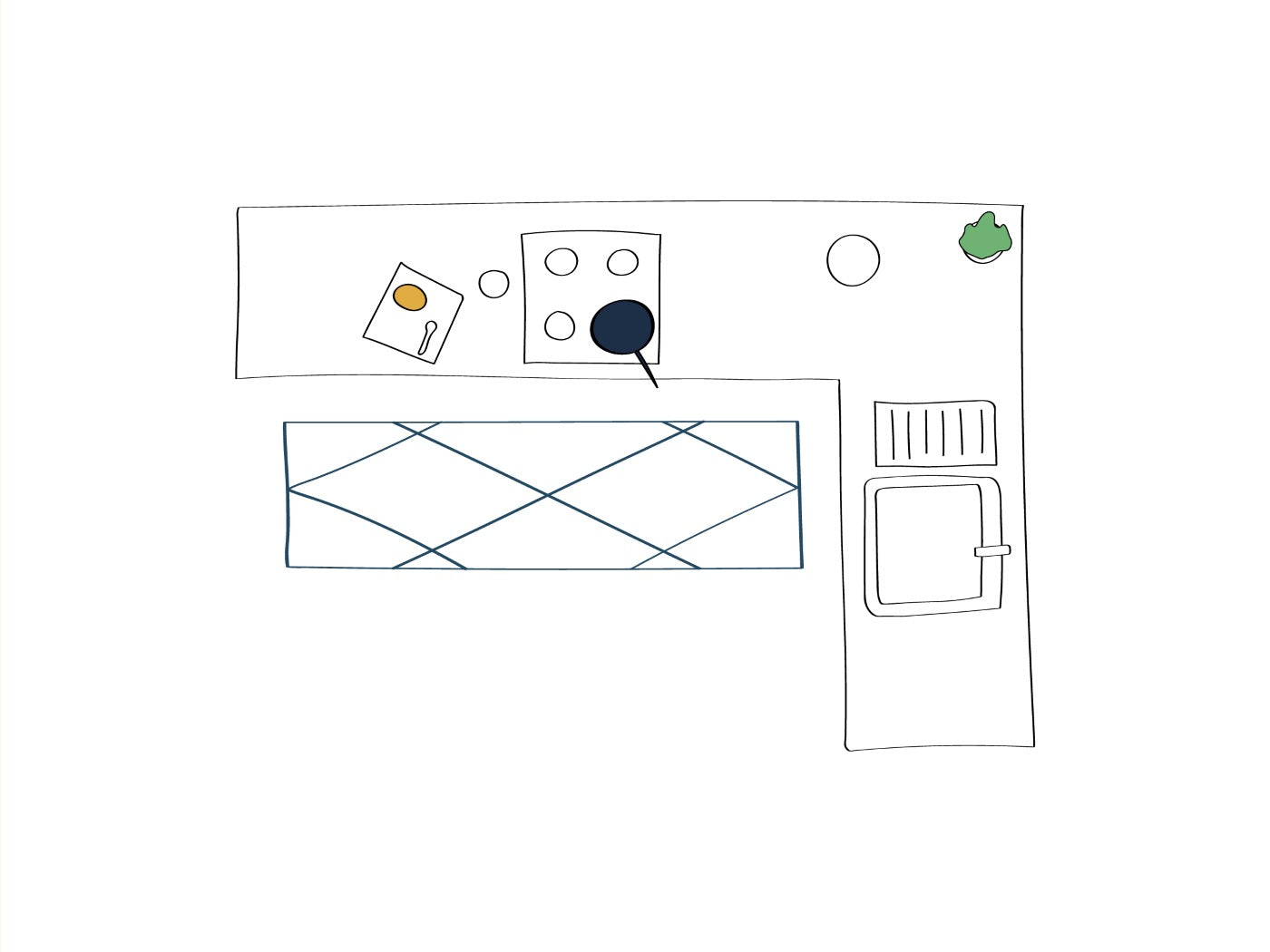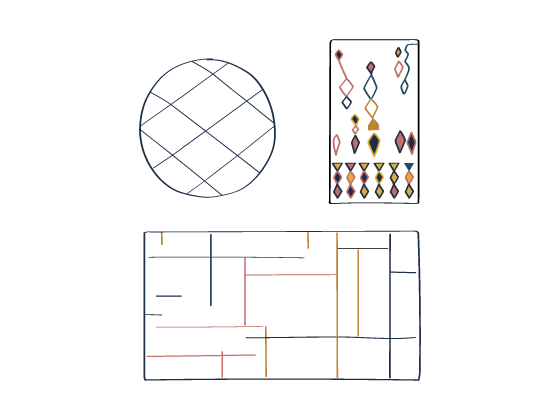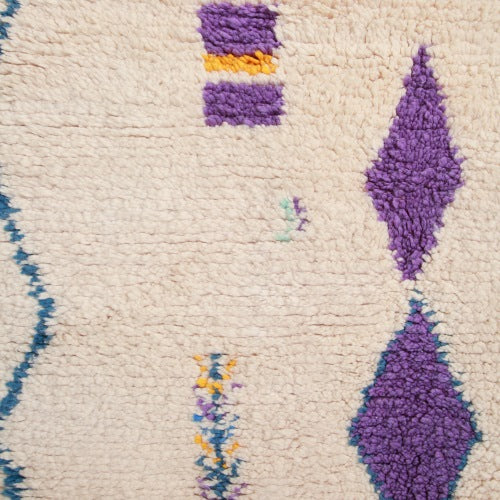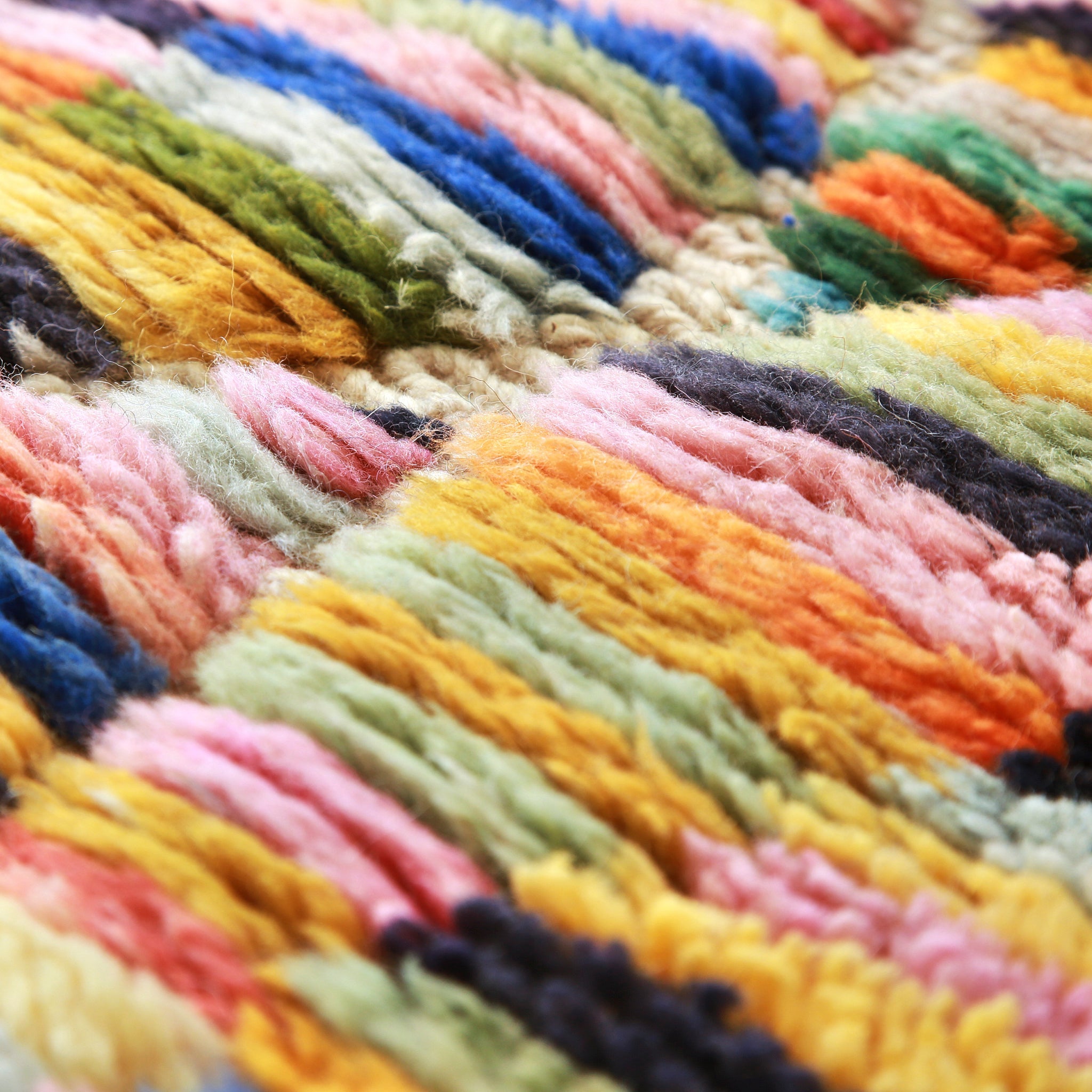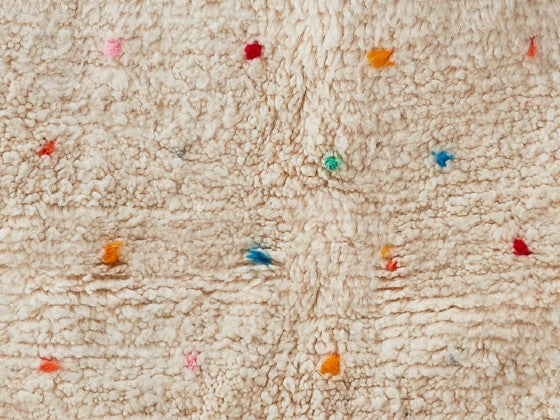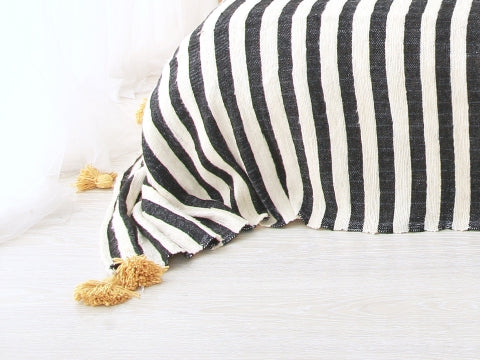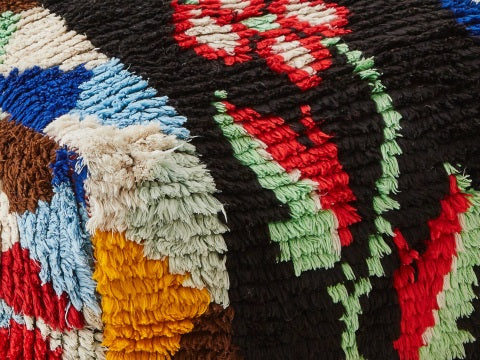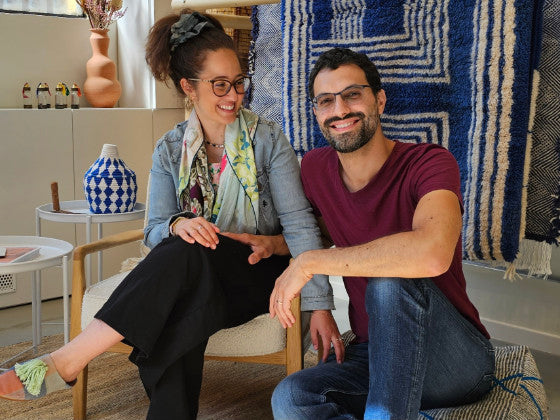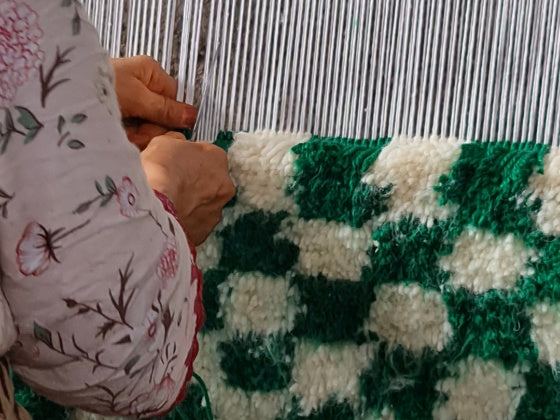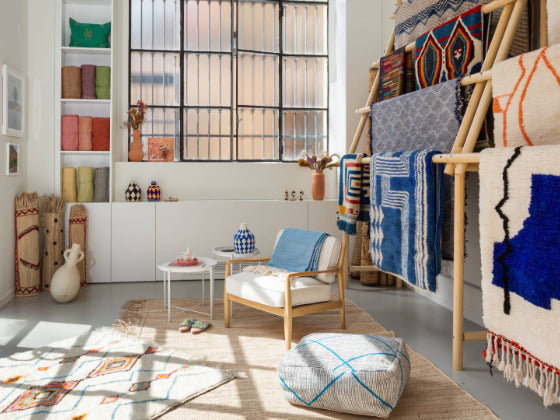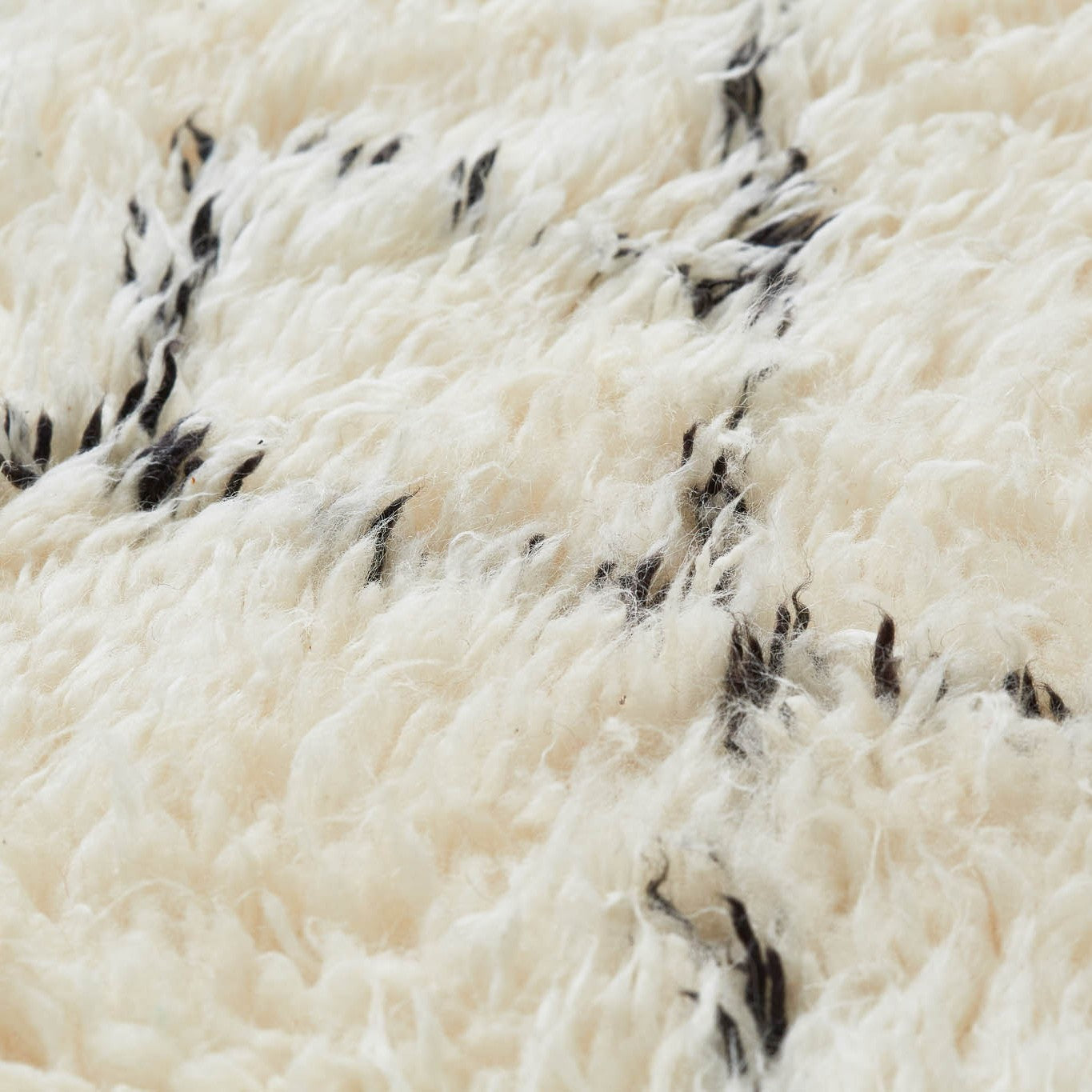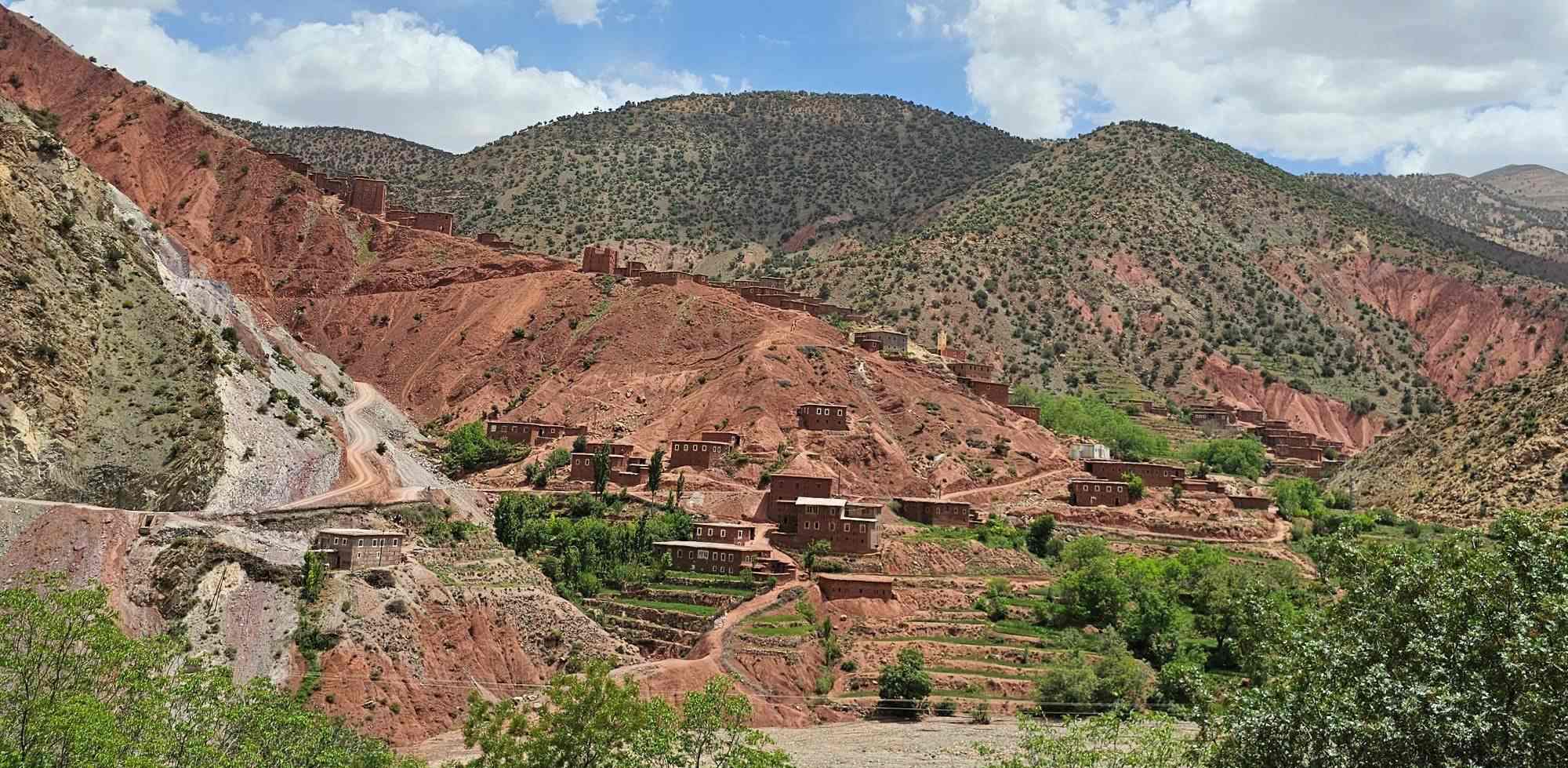For the graphic identity of Casa Amar, we chose an open hand, designed for us by the talented Ayesha Zafar Sabri, architect, designer and artist.
This is the Khmissa (name in Darija), also called Tafust (in Tamazight) and commonly called the Hand of Fatima in Italy.
We love its meanings and everything it represents, we are fascinated by its history and the infinite possibilities of representing it. For us this choice is also a tribute to the hands of the artisans who work to create the wonderful Casa Amar rugs.
In this article we tell you 5 interesting things to know about the Khmissa:
- Khmissa has ancestral origins
It is difficult to date its origin with certainty. It is likely that it was introduced by the Carthaginians (in present-day Tunisia) as an attribute and symbol of the female divinity of Phoenician origin Tanit, goddess of fertility, love and pleasure.
The open hand is also found in the Mesopotamian civilization (current Iraq and Kuwait) or in the civilization of Ancient Egypt, always as an amulet linked to a powerful female deity.
- The word Khmissa comes from the 5 fingers of the hand
Khmissa comes from “Khamsa” which means five in Arabic. In Hebrew the same hand is called Hamsa, again from the number five.
- Muslims, Christians and Jews have associated her with important female characters
In Muslim culture, the Khmissa is associated with the hand of Fatima, daughter of the Prophet Muhammad (sA'as).
The Christians of the Levant associated it with the hand of Mary, while the Sephardic Jews called it the Hand of Miriam.
- It is an apotropaic symbol: it serves to ward off or cancel out a malignant influence
In Moroccan culture, the Khmissa is often seen as a symbol of protection against evil and in particular against the evil eye.
This belief is found in various shades: there are those who attribute a real protective power to Khmissa-shaped amulets. However, there are those who appreciate the symbol without lending the object itself a protective power, since it is considered that protection comes only from Allah.
- It is represented in an infinite number of ways
There is no single way to draw the Khmissa. It can be made of gold, silver, wood, metal, ceramic, glass... It can be colored or plain, minimalist or with a complex design. The fingers can point up or down.
Khmissa is used particularly in jewellery, because in this way it can be worn, both for aesthetic reasons and for the meanings attributed to it by Moroccan culture.
It is also found on the entrance doors of traditional houses in the medina, as door knockers. Both Moroccan artisans and brands include it in clothing or home furnishings.
It is a symbol that continues to be loved, to inspire and to unite.

